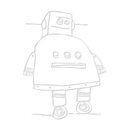Introduction: How to Make Your Real Drum Kit Work With Rock Band on Playstation 3
This is a step by step tutorial on how to set up Rock Band 1 and 2 on Playstation 3 to a real drum kit.
What you'll need:
What you'll need:
- 5 piece drum kit (we used a Dixon Demon)
- Playstation 3 (or 2)
- RockBand 2 (or original RB)
- Rock Band Microphone and two guitar controllers
- 5 acoustic drum triggers, appropriate cables (cable connector types depends on the triggers and interface, just make sure they are compatible with each other)
- drum trigger interface
- Midi to USB Rock Band Adaptor
- RemO's Tone Control Rings
- Hart Dynamics Magnum mesh heads (optional)
- Blue, Red, Green, Yellow spray paint
- polycrylic spray coating
- 3M mounting tape
- orange construction paper
- Elmer's glue
- Pintech cymbal triggers (optional)
Step 1: Get the Gear and the Game
Get the Playstation 3 or 2, and the Rock Band or Rock Band 2 pack that comes with the drums, guitar and microphone, and game disc. Even through you will not use the drums, this pack is less expensive than buying the game, two guitar controllers, and the microphone separately. And if you want to return you drum kit to a normal later, you can use the included Rock Band drum kit to play the game. We used the Guitar Hero World Tour controller for our second guitar. You'll also need real drums. We used a Dixon Demon in Urban Camo.
Step 2: Get the Special Adaptor
Buy a USB Rock Band adaptor. We bought ours from Rock Band Forum user sethmeisterg. (This will not work with the XBox 360 because of Microsofts interface licensing restrictions, this is why it must be a Playstation 2 or 3).
Step 3: Take Measurements
Measure and the diameter of your toms and snare (or you might already know). If you are going to use cymbal triggers also, measure them as well. We bought the Pintech TC Cymbal Package which includes a 14, 18, and 10 inch cymbal triggers. In this case, size doesn't matter.
*Photo Courtesy of: http://pintechworld.com/
*Photo Courtesy of: http://pintechworld.com/
Step 4: Get the Rings
Get the appropriate quantity and size of RemO's Tone Control Rings at a drum accessory store. They come in packs, but sometimes dealers will sell the rings individually.
Photo Courtesy of: http://remo.com
Photo Courtesy of: http://remo.com
Step 5: Get Mesh Heads (Optional)
Buy the appropriate size and quantity of mesh heads. This is optional. Using mesh heads will be quieter than the regular acoustic heads. This will let you hear the music track of the game more easily. You'll only need one mesh head per drum. You can keep the original bottom heads. Remove the top rims, then the top head, mount the mesh heads, and re-mount the rim. We used Hart Dynamics Kontrol Screen Magnum.
Photo Courtesy of: http://www.hartdynamics.com/
Photo Courtesy of: http://www.hartdynamics.com/
Step 6: Paint the Rings
Lay out the tone rings on your kit and note which drums on the kit correspond with the Rock Band set up. Then, take them outside and paint each one the appropriate colors. From left to right it should be: red, yellow, blue green. You may need to apply several coats so you can't see the white through the paint.
Step 7: Coat the Rings
After the paint dries, apply the polycrylic spray. This extends the color on the rings and prevents chipping.
Step 8: Mount the Rings
After the polycrylic coat dries, attach each ring to the head with the 3M Mounting Tape. If you are using the cymbal triggers, glue the rings to the them. We cut the bottom part of the rim to accommodate the foam pad on the trigger.
Step 9: Label the Kick Drum
We glued two strips of orange construction paper to the bottom inside rim of the kick drum.
Step 10: Mount and Connect the Triggers
Mount the triggers to the drums and connect them to the trigger interface. We used the Alesis DM5. You can also use the Alesis Trigger I/O, Roland TD-3 or Roland TMC-6. Connect the trigger interface to the USB adaptor, and the USB adaptor to the Playstation 3.
Step 11: Configure the Interface
Set up your drum trigger interface to trigger the correct midi note numbers as described by the USB adaptor interface. You can start the game to test the triggers. You may want to put the game in the
no fail
mode so you will not need to keep restarting the song. Adjust the crosstalk and gain setting in the drum trigger interface.
Step 12: Voilà! Time to Rock Out!
Have a blast!



